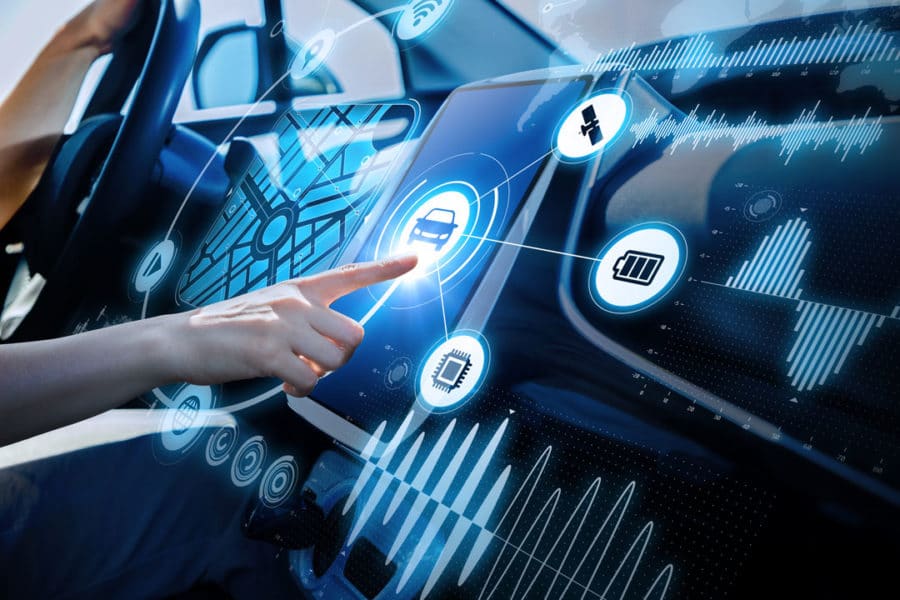AI is swiftly making its presence felt in various technological applications including fleet management.
AI can be used for ensuring better connectivity, along with driver safety and management.
This technology works well for predictive maintenance and accurate diagnosis.
Routing and tracking become more efficient thanks to the implementation of AI.
Data generated can be used for smarter decision-making.
Be it apps, websites, or gaming predictions, artificial intelligence (AI) is slowly becoming a constant presence in tech applications – it has completely transformed the user experience. One of the areas where AI is being extensively implemented is fleet management, especially because of concerns regarding driver safety, without compromising productivity and efficiency.
What is AI Fleet Management?
Fleet management is actually an umbrella term as it consists of solutions like operations management, vehicle maintenance, performance management, fleet analytics, and maintenance, etc. To put it in a nutshell, AI fleet management can be defined as making use of artificial intelligence-based technology to manage and monitor fleet operations. It not only streamlines the workflow of fleet managers but drastically reduces the margin of human error. When AI-based recommendations are given to fleet managers, drivers, and mechanics, they can make smarter decisions that boost the long-term performance of the fleet. It also serves as assistive technology, ensuring that drivers retain autonomy during each transport cycle. It is changing how a fleet operates and communicates, in order to improve productivity and safety, while keeping it cost-effective.
Which aspects of fleet management can benefit from AI?
Seamless Connectivity
Sweeping integration of IoT technology will let drivers, vehicles, devices, and assets work in tandem, by constantly cross-sharing valuable data. With more advanced user-experience smart apps, data can be sent and received faster, while the functionality of fleets greatly improves. Furthermore, AI connectivity dictates that voice command integration to smart devices will soon be the adopted norm.
Connected Vehicles
Very soon every car will be a “connected vehicle”. These vehicles can relay information to other vehicles such as congestion on roads, weather conditions, and so on, for preventing accidents. Automation of smart vehicles is necessary for better utilization of time and resources. Fleet managers can be easily kept in the loop when it comes to vehicle tasking, routing, and other general tracking applications. The humongous amounts of data generated by these vehicles are going to be stored and processed by AI-integrated technology.
Driver Safety & Management
Fleet accidents are becoming a major cause for concern. Drivers dedicate a substantial number of hours to being on the road, but the associated risks haven’t decreased over the years. Driver fatigue, reckless driving, and troubling driving patterns can lead to devastating consequences. That is why most fleets are now implementing AI-integrated response systems that monitor driver behavior. Fleet managers can keep tabs on risky road behaviors like yawning, constant blinking, missing trunks or exits, drifting out of lane, slower reaction time, etc. to avoid mishaps. AI-powered intelligent driver behavior analysis applications and virtual driving assistance systems can capture every minute of driving. It lets them detect issues and guide the fleet in real-time by suggesting corrective measures, so that fleet activities and profitability aren’t affected.
Routing and Tracking
The movement of fleets from one destination to another is always a huge challenge due to a plethora of unpredictable variables. Live tracking and routing are two crucial aspects of transportation. Live tracking involves finding out the fleet travel history, further travel routes, climatic conditions, and other data, while routing is necessary for better on-road assistance to avoid major incidents. For example, let us assume one of the vehicles has an issue with the engine and you are in a remote location with no assistance, it will take maximum hours or even a day to resolve this issue. But with AI-powered virtual assistance, the systems can predict and coordinate with teams regarding assistance and maintenance in advance, so the problem can be resolved in real-time.
Data Analytics
As mentioned, there will be loads of data generated from geographically dispersed vehicles. If the multi-point data from historical insights in real-time can be properly analyzed, it will help fleet managers to prioritize opportunities and identify risks. It lets them select the best course of action for problematic situations. For instance, this data can be used to predict traffic, road conditions, environmental hazards, mechanical faults, etc. AI-powered analytics can help both drivers and fleet managers to address challenges and come up with suitable solutions.
Scheduling Maintenance
The automobile industry has made rapid progress, via accurate self-diagnosis and predictive maintenance. It helps fleet managers diagnose their fleet properly and determine solutions to faults discovered in advance. They can schedule maintenance accordingly, to reduce operational costs and prevent major problems in the future.
Many modern vehicles have already integrated some AI, but over time it will revolutionize every aspect of driving, starting from navigation and voice commands, to autonomy and security. Fleets benefit from powerful AI-based applications that handle anything from route recommendations to road risk data analysis and even driver coaching. It not only provides accuracy and convenience but also ensures that efficiency isn’t compromised. Transportation of goods and services can be accomplished in a more seamless manner, thanks to AI technology.
About The Author: Neil Coomar is the Chief Executive Officer at Anstel Global, a SaaS-based IoT platform for connected logistics solutions that helps fleet management companies reach business objectives. He is passionate about IoT-based applications and has spent the last decade working with organizations to improve their ROI through connected logistics solutions.
Guest Post Service By www.guestarticlehouse.com




